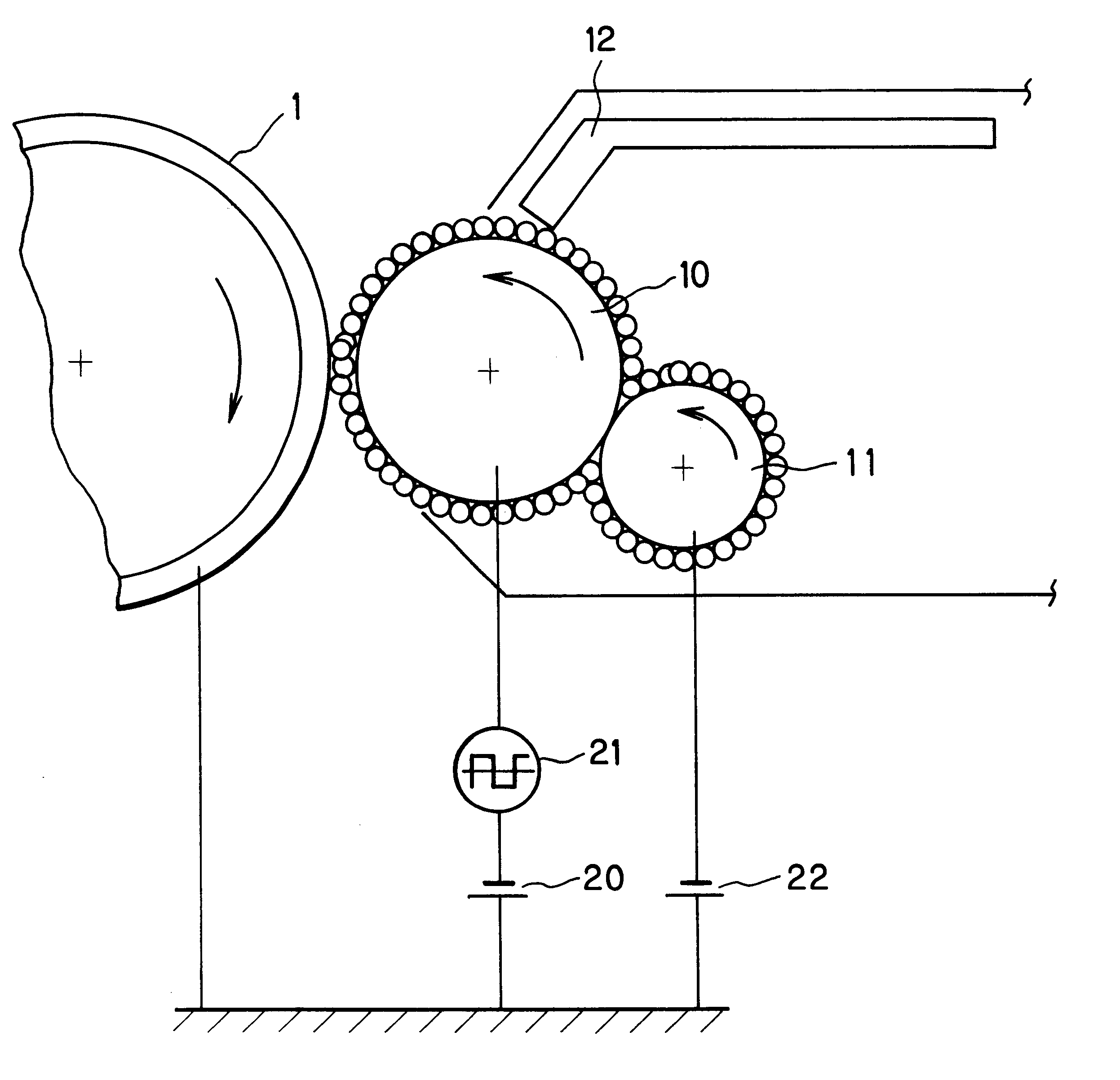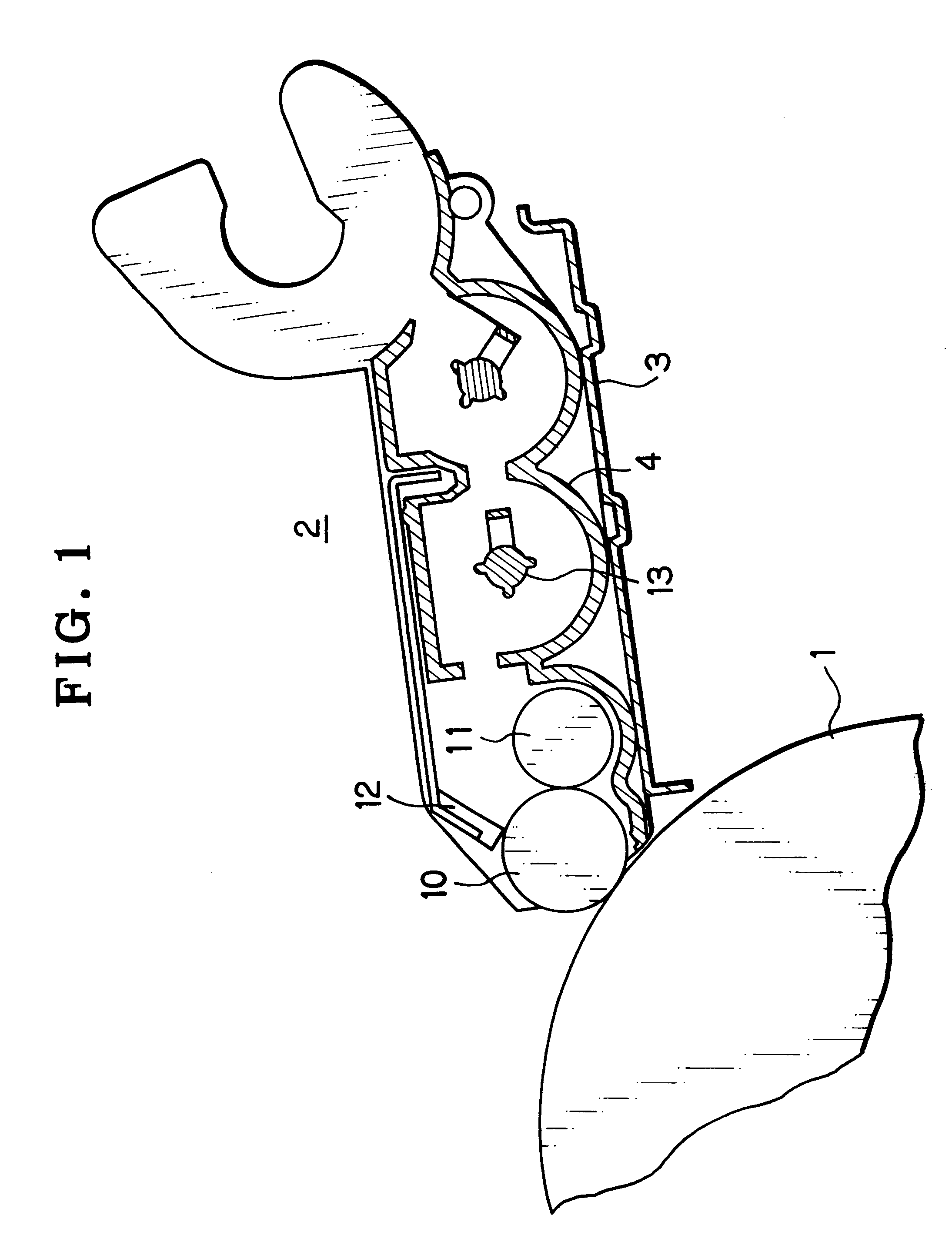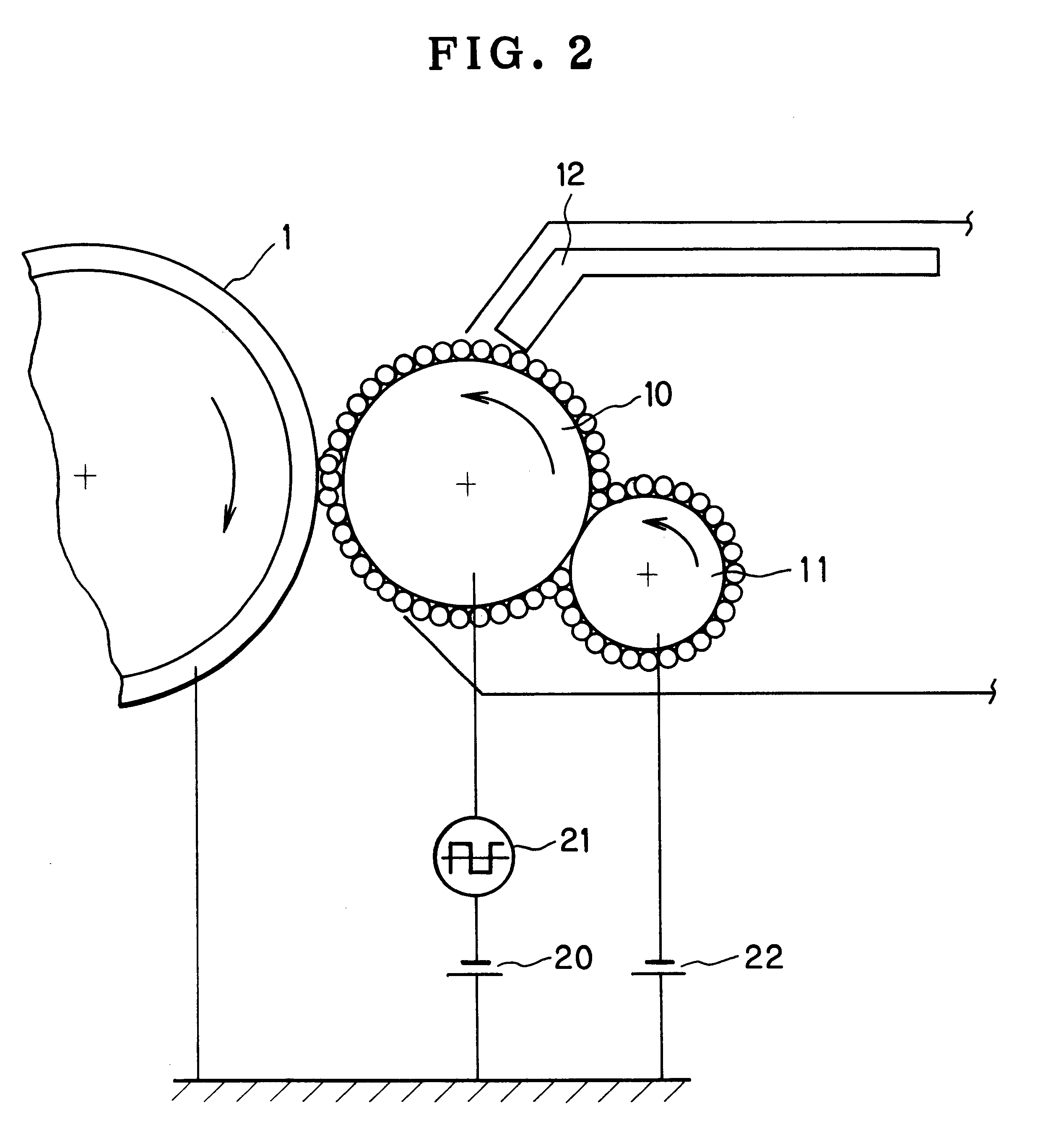Image forming apparatus with reduced image defects
a technology of forming apparatus and reducing image defects, which is applied in the direction of electrographic process apparatus, instruments, optics, etc., can solve the problems of clogging of the nip between the developing roller and the regulating blade, uneven feed direction, and irregular feed on the developing roller
- Summary
- Abstract
- Description
- Claims
- Application Information
AI Technical Summary
Benefits of technology
Problems solved by technology
Method used
Image
Examples
Embodiment Construction
An embodiment of the present invention will be described below with reference to the accompanying drawings. FIG. 1 is a schematic view illustrating a developing unit used in the image forming apparatus according to the present invention. It should be noted that a full-color developing device has four developing units for yellow Y, magenta M, cyan C and black Bk; in FIG. 1, however, only one developing unit is shown.
In the figure, a photosensitive drum 1 serves as an electrostatic latent image carrier. The photosensitive drum 1 is an elastic roller with a photosensitive layer formed on the surface thereof. The photosensitive drum 1 is provided with a backup roller for supporting the elastic roller from the inside thereof at a position where the photosensitive drum surface contacts another member, e.g. a charging unit. A developing unit 2 is provided to face the photosensitive drum 1. The developing unit 2 has a frame 4 secured to a base 3. The frame 4 contains an agitator mechanism 1...
PUM
 Login to View More
Login to View More Abstract
Description
Claims
Application Information
 Login to View More
Login to View More - R&D
- Intellectual Property
- Life Sciences
- Materials
- Tech Scout
- Unparalleled Data Quality
- Higher Quality Content
- 60% Fewer Hallucinations
Browse by: Latest US Patents, China's latest patents, Technical Efficacy Thesaurus, Application Domain, Technology Topic, Popular Technical Reports.
© 2025 PatSnap. All rights reserved.Legal|Privacy policy|Modern Slavery Act Transparency Statement|Sitemap|About US| Contact US: help@patsnap.com



